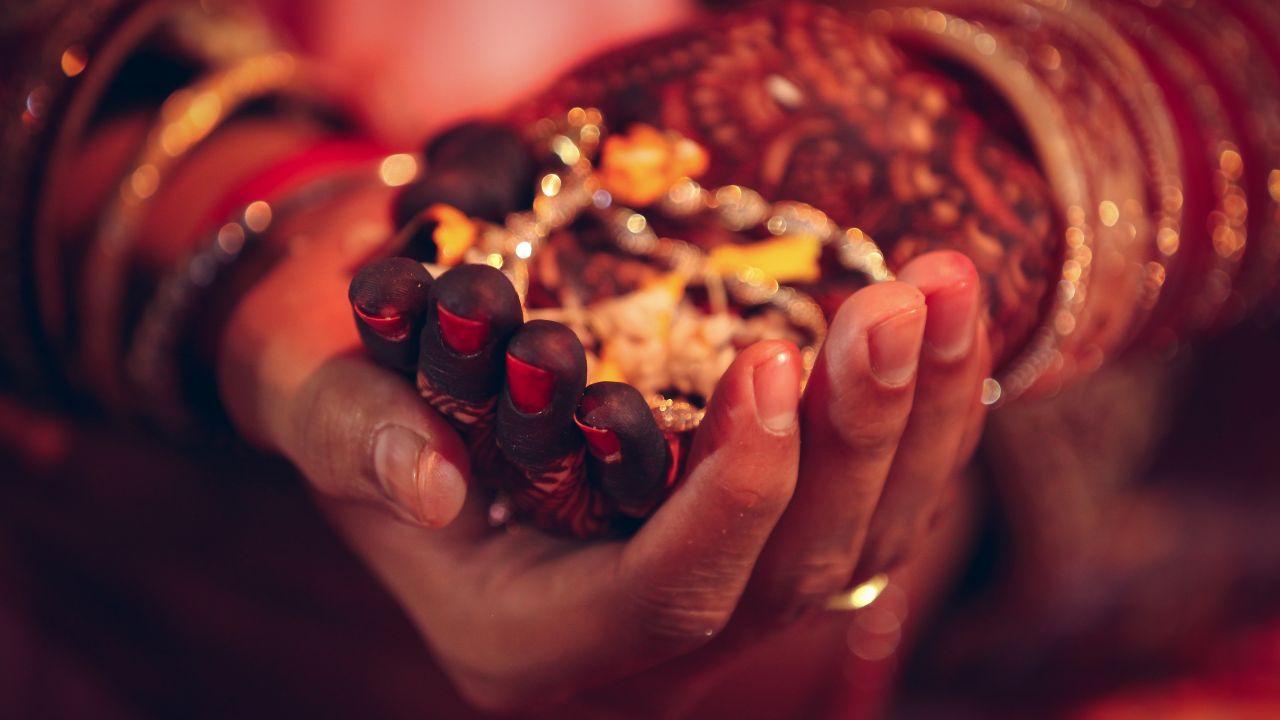Punjabi wedding

Punjabi weddings are colorful and vibrant, reflecting the rich cultural traditions of the Punjabi community in the northern part of India. Here are some of the common features of a Punjabi wedding:
- Roka: This is the first step of the wedding process, where the families of the bride and groom formally agree to the marriage.
- Sagai: This is the engagement ceremony, where the families exchange gifts, rings, and sweets.
- Sangeet: This is a musical event where family members and friends of the bride and groom sing, dance, and celebrate the upcoming wedding.
- Mehendi: A few days before the wedding, the bride and her female relatives and friends get together for a mehendi ceremony, where intricate henna designs are applied to their hands and feet.
- Chooda: On the wedding day, the bride’s maternal uncle gives her a set of red and ivory bangles (chooda) to wear for the first year of her marriage.
- Baraat: The groom arrives at the wedding venue on a decorated horse, accompanied by his family and friends, to the sounds of dhol and music.
- Milni: The families of the bride and groom exchange garlands and embrace each other as a sign of acceptance and respect.
- Anand Karaj: This is the Sikh wedding ceremony, where the bride and groom take their vows in front of the Guru Granth Sahib (the holy scripture of the Sikh faith).
- Laavan Phere: This is a ritual in which the bride and groom circle the Guru Granth Sahib four times, while hymns are recited, to signify their union.
- Doli: At the end of the wedding ceremony, the bride bids farewell to her family and friends and leaves with her husband, in a ceremony called Doli, to start her new life.
Punjabi weddings are known for their lively and joyous atmosphere, with a lot of music, dancing, and feasting. They are also steeped in tradition, with many customs and rituals that symbolize the importance of family, community, and culture.
Specific Content Keywords : Anand Karaj (Sikh wedding ceremony),Chuda ceremony (bridal bangles),Kalire ceremony (ornaments hanging from bride’s bangles),Choora ceremony (giving of bridal bangles),Ghodi (decorated wedding horse for the groom),Sehra (groom’s veil),Milni (meeting of the families),Sagai/Engagement ceremony,Sangeet (pre-wedding musical celebration),Mehndi/Henna ceremony,Haldi ceremony (turmeric paste application),Vatna (applying turmeric to the bride/groom),Ghara Gharoli (bride/groom’s ceremonial bath),Jaago (traditional pre-wedding dance),Baraat (groom’s wedding procession),Milni (meeting of the families),Doli (bride’s departure in a palanquin or car),Jutti Chupai (hiding the groom’s shoes for a ransom),Varmala ceremony (exchange of garlands),Pheras (circumambulation around the Guru Granth Sahib),Kanyadaan (giving away the bride by her parents),Vidaai (farewell of the bride from her family),Langar (community feast),Boliyan (Punjabi folk songs),Dholki (pre-wedding musical celebration),Giddha (Punjabi folk dance performed by women),Bhangra (Punjabi folk dance),Doli Saja Ke Rakhna (decorating the palanquin for the bride’s departure),Wedding attire: Sherwani for the groom, Lehenga for the bride,Traditional music and dance performances,Chak De Phatte (breaking of a clay pot by the groom’s friends),Kirpan ceremony (symbolic gift for the groom),Anand Sahib (Sikh hymn),Ardas (Sikh prayer),Guru Granth Sahib (holy scripture),present during the wedding,Kirtan (devotional hymns),Karah Prasad (sacred sweet offering),Palla ceremony (bride’s veil tied to the groom’s scarf),Phulkari (traditional Punjabi embroidery),Patiala peg (a type of alcoholic drink).

